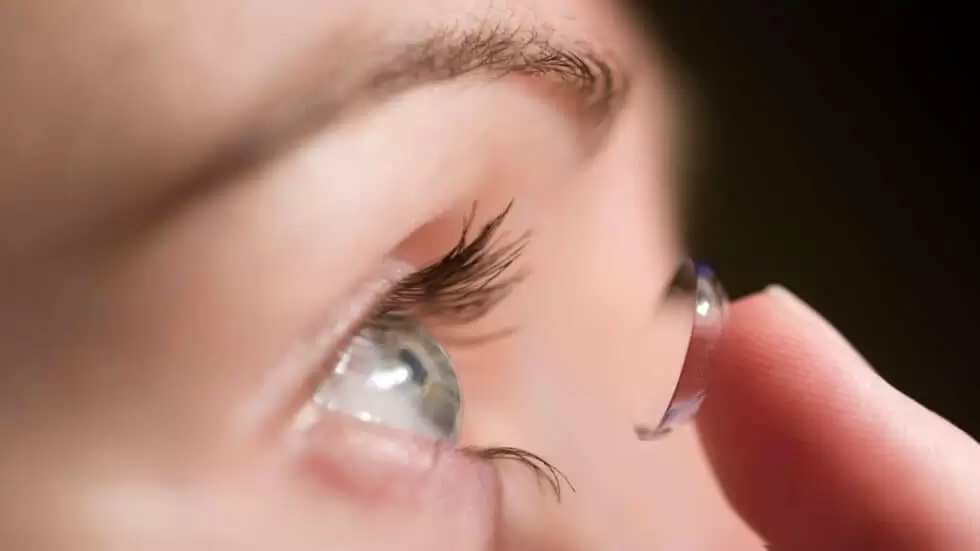
A contact lens is a thin, clear lens that is placed on the cornea of the eye and is used to correct vision problems. Unlike glasses, contact lenses are located inside the eye and thus provide a wider field of vision. These lenses form a clear image on the retina by properly refracting light in case of refractive eye defects such as myopia, hypermetropia, and astigmatism.
Contact lenses and glasses both have their advantages and disadvantages. Contact lenses can be more aesthetically pleasing and more comfortable when exercising. However, glasses are easier to use and reduce the risk of eye infections. Personal preferences and lifestyle determine which is better.
Inserting and removing contact lenses may seem difficult at first, but it becomes easier with practice. After washing your hands, put the lens on your finger and place it on your eye, opening the eyelid. To remove, gently pull down on the lens and squeeze it with your thumb and forefinger.
Advantages:
- Expands the meeting area.
- May be more comfortable during sports and physical activities.
- There is no evaporation problem in the glasses.
Disadvantages:
- Requires more maintenance and cleaning.
- There is a risk of eye infection.
- Prolonged use may cause dry eyes.
The use of contact lenses varies according to the type. Daily lenses can be used for one day, and monthly lenses for one month. Long-term lenses should be replaced regularly.
Regular cleaning and disinfection of contact lenses is important for eye health. Wash the lenses with a special solution and store them in the container. Don't forget to clean the storage container regularly as well.
You should not touch the lens without washing your hands. Also, you should pay attention to the period of use of the lenses and remove them before going to bed at night. If you have symptoms such as redness, pain or blurred vision in your eyes, you should stop using the lenses and consult an eye doctor.
Yes, improper use or unhygienic use of contact lenses can lead to eye infections. Therefore, it is very important to pay attention to the cleanliness and correct use of lenses.
Contact lenses can cause some side effects. These can include dry eyes, redness, blurred vision, foreign body sensation, and infections. If you experience such symptoms, you should stop using the lens and consult a doctor.
Colored contact lenses are safe when used correctly. However, colored lenses purchased arbitrarily or used incorrectly can harm eye health.
Yes, contact lenses can correct astigmatism. These special lenses, called toric lenses, are designed to correct refractive errors caused by astigmatism.
Yes, contact lenses can be worn while exercising and are usually more comfortable than glasses. However, it should be avoided when doing water sports, as the risk of infection increases when the lenses come into contact with water.
Most contact lenses should be removed while sleeping. Lenses left in the eyes at night can lead to a lack of oxygen and an increased risk of infection. However, there are also special lenses designed for night use, you should consult your doctor before using these lenses.
Prices vary according to brand, type and usage period. You can get the lenses from your eye doctor or from trusted optical stores. Online shopping sites are also an option for buying lenses, but you should definitely choose trusted and reputed sites.
There are different types of lenses based on their material, design, and lifespan. Each type has its own characteristics and advantages.
According to the material:
1. Soft Contact Lenses
Hydrogel Lenses: These are lenses with a high water content, but limited oxygen permeability.
Silicone Hydrogel Lenses: These are lenses with high oxygen permeability. It allows the eyes to breathe better and is suitable for longer use.
2. Rigid Gas Permeating (RGP) Lenses
These lenses are made of hard material and have high oxygen permeability. They are more durable and are a great option for correcting astigmatism.
By design:
1. Spherical Lenses
It is used to correct simple refractive errors such as myopia and hypermetropia. All parts of the lens have the same diopter power.
2. Toric Lenses
Designed to correct astigmatism. These lenses have different diopter power in different meridians.
3. Multifocal Lenses
These lenses are used to correct age-related presbyopia. It has several different dioptre powers and provides clear vision at both near and far distances.
4. Colored Lenses
It is used for aesthetic purposes. It is designed to change or highlight the color of the eyes. Colored lenses can be both medical and cosmetic.
By Duration of Use:
1. Everyday Lenses
A fresh pair is used every day and discarded at the end of the day. It does not require maintenance and reduces the risk of eye infection.
2. Weekly and Bi-Weekly Lenses
It is used for one or two weeks and should be cleaned daily. These lenses are more economical than daily lenses, but require more maintenance.
3. Monthly Lenses
It can be used for one month. It should be cleaned and disinfected daily.
4. Long Term Wearable Lenses
These lenses can be worn day and night for a week to a month. However, you should consult your eye doctor before using these lenses, as wearing them at night can be risky for your eye health.
2024-07-17
2024-02-14
2024-02-14
2024-06-12
2024-06-13
2024-06-13
2024-06-13
2024-06-14
2024-06-14
2024-06-14
2024-06-14
2024-06-14
2024-06-14
2024-07-31
2024-07-31
2024-07-31
2024-07-31
2024-08-09
2024-08-12
2024-08-28
2024-09-05
2024-09-06
2024-09-14
2024-09-19
2024-09-19
2024-10-01
2024-10-02
2024-10-07
2024-10-21
2024-10-23
2024-10-29
2024-11-12
2024-11-18
2024-11-21
2024-11-26
2024-11-28
2024-12-03
2024-12-06
2024-12-10